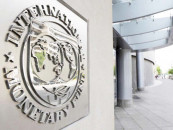Accountability: NAB’s enforcement strategy extended
Decision prompted by success of policy in preceding years

To maintain standards and to ensure transparency, enforcement and prosecution is monitored through daily, weekly and monthly reports and inspections. PHOTO: APP
The bureau’s chairman, Qamar Zaman Chaudhry, said in a statement on Sunday that NAB had taken various measures to revamp the apex accountability body and chalk out an effective and comprehensive National Anti-Corruption Strategy (NACS) to tackle corruption and corrupt practices.
He added that NACS has been acknowledged by national and international organisations such as PILDAT and Transparency International.
In 2014, the accountability bureau was revamped and a number of initiatives were taken to pursue corruption cases on merit without any fear and favour under the enforcement strategy.
The strategy proved successful in 2015 and the present management decided to continue its strategy in 2016 as well.

Highlighting features of the strategy, Chaudhry said that once the bureau receives a written complaint about an alleged act of corruption defined under section 9, NAB verifies the complaint and the complainant is called for confirming the evidence available with them.
Once it is determined that the alleged offence falls under NAB ordinance and available evidence justifies further process, an inquiry under section 18 of NAO is authorised to confirm whether the offence took place and who were all the people involved.
Statements of witnesses and suspects are also recorded.
The suspects are at this point offered the option of voluntarily returning any illegally gained money and avoid any trial or its subsequent fallout. They are also offered the option of plea bargain. This whole process is completed after due deliberations at each level by giving consideration to the role of combined investigation teams (CITs) and regional executive board meetings (RBMs).
A case is accorded a maximum of 10 months from verifying the complaint, to inquiry, to investigation and finally filing a reference in the accountability court.
In order to ensure uniformity and standardization, a Standard Operating Procedure (SOPs) for investigation officers has also been reviewed and revised after a gap of 10 years in order to benefit from the experience and collective wisdom of senior supervisory officers. A system of CIT comprising of Director, Additional Director, Investigation Officer and a Senior Legal Counsel has been put in place.
To maintain standards and to ensure transparency, enforcement and prosecution is monitored through daily, weekly and monthly reports and inspections.
During the investigation, the accused is confronted with evidence collected and has the option of plea bargain to return the illegally gotten money. In any case, the disposal of this stage is referred to the court for final approval.
Published in The Express Tribune, October 24th, 2016.



















COMMENTS
Comments are moderated and generally will be posted if they are on-topic and not abusive.
For more information, please see our Comments FAQ